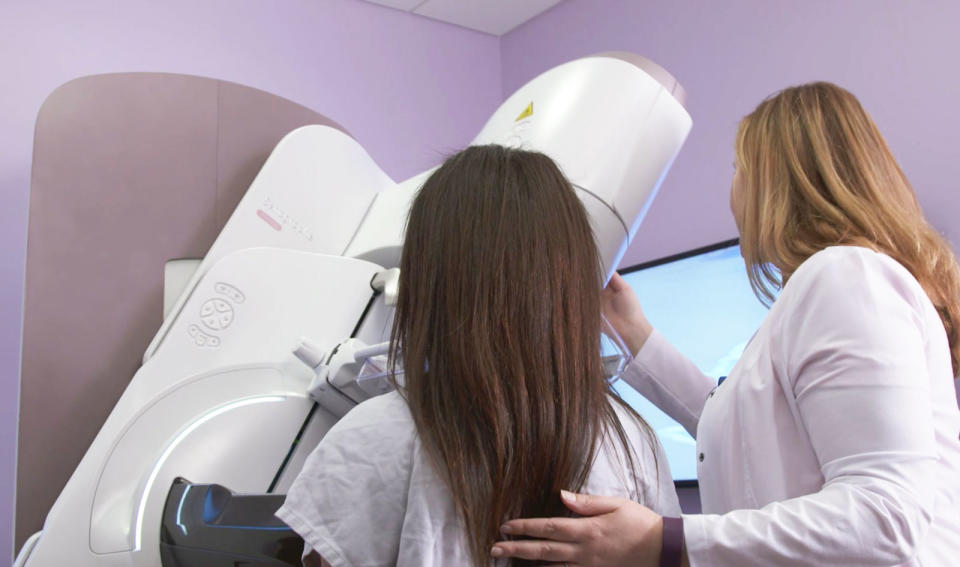Control your own mammograms with new GE tech
A remote gives patients control over the uncomfortable compression phase of the screening.
GE introduced a new mammography system that gives patients a remote to control the compression part of the screening themselves. Giving them autonomy over the unpleasant, painful portion of the process ideally makes the whole thing more comfortable, which will hopefully bring in more folks who avoid mammograms -- and catch more instances of breast cancer.
"Mammograms can be uncomfortable or even painful," said Agnes Berzsenyi, President and CEO of GE Healthcare Women's Health in a press release. "Engineered by a team of women for women, GE Healthcare has transformed mammography with the creation of patient-assisted compression to decrease pain associated with the exam, improve patient experience and increase outcomes for breast cancer screening which we know saves lives."
The remote, called the Dueta, is the latest part of GE's Senographe Pristina mammography system that the company launched back in fall 2016. An all-female team at the company's Healthcare campus in Buc on the outskirts of Paris designed the Senographe Pristina to be far less alienating than the angular, cold metal machines they were used to.
Tech advances that reduce the need for further breast cancer surgeries are great, but so is making the scanning process less intimidating to get more people in the door. One survey found that a third of the US population eligible for screenings skips out on them, so making the screening process more comfortable -- and in the remote's case, more empowering -- could literally save lives.
"Patients who used the remote control said the exam was more comfortable and they were visibly more relaxed," Dr. Kathy Schilling, Medical Director of the Boca Raton Regional Hospital's Christine E. Lynn Women's Health & Wellness Center and the radiologist who reviewed the new remote, said in a press release. "Any breast radiologist knows that when patients are relaxed, we are able to get better images and better images lead to a more confident diagnosis. My hope is that increasing comfort during the exam and giving patients the option of working with the technologist to set their own compression will increase compliance, enable early detection and improve outcomes."


